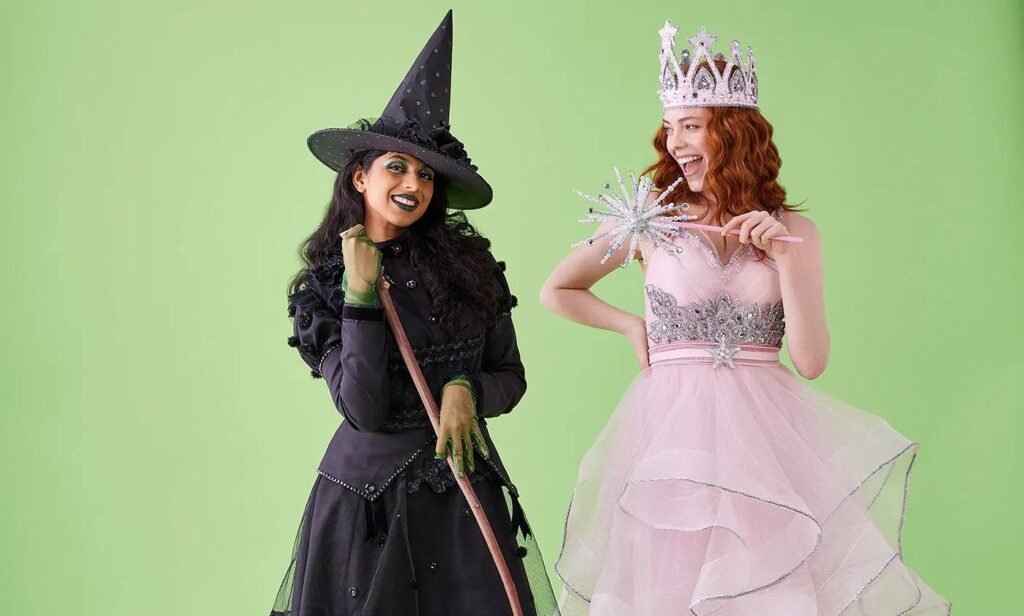Michael’s is beefing up its Halloween selection to appeal to people who want to make their own costumes to save money.
Compared to last year, the craft retailer brought in 23.5% more Halloween ribbons this year, including new spidery lace and bloody ribbons. Michaels also expanded the number of fabric dyes and paint pens and expanded its selection of foams and fibers for three-dimensional costumes. In addition, Michaels has lowered prices on items such as T-shirts and increased the number of plain hats and patches.
Chuck Smith, senior vice president and general merchandising manager at Michaels, told Modern Retail that Michaels is making these changes to give shoppers on a budget more choices in clothing and accessories. It is said that he carried out “As we looked ahead to this season, we saw the economic uncertainty that is currently prevalent across the country,” he said. “We asked ourselves, ‘How will our customers be interested in DIY this Halloween and holiday season? How can we better serve them?’
Earlier this year, Michaels surveyed 1,000 people planning to celebrate Halloween, and more than half (53%) said they wanted to “DIY” their costumes. Additionally, 57% of Michaels Makers Circle members said they were more likely to purchase items for DIY Halloween costumes and props last year. Because of this, Michael’s has updated its DIY selection and pricing so that “anyone can come in and put together the look they’re looking for,” Smith said.
Gartner director analyst Brad Jasinski told Modern Retail that Michaels’ move is consistent with general consumer habits. Gartner’s 2024 Consumer Omnibus Survey found that 74% of U.S. consumers are “very” or “extremely” concerned about increasing the cost of living. Consumer prices rose 2.4% in the 12 months to September, down from 2.5% in August and the slowest rise since February 2021. Still, food prices have increased by 28% since 2019, and goods and services remain a source of stress for Americans. many families.
Michael’s origins date back to 1973, when founder Michael Dupee converted a Ben Franklin general store in Texas into a craft store. The company went public a decade later, but was taken private by Bain Capital and Blackstone in 2006 for $6 billion. In 2014, Michaels went public again, raising $473 million in an IPO. The company returned to private ownership in 2021 with a deal worth $3.3 billion. Michael’s is currently owned by Apollo Global Management.
Michaels is spreading the word about its expanded Halloween DIY selection through email and social media. The website features nearly 60 costume and accessory ideas that kids and their families can make at home. These include robot, lion, zombie, and pirate costumes. Michaels provides a shopping list of everything you need to make the costume and provides step-by-step instructions. Customers can add all products to their cart with the click of a button.
In addition to DIY costume materials, Michael’s also carries and plans to continue carrying ready-made Halloween costumes and accessories. It’s also making far-reaching changes to how Halloween is celebrated. This year, Michaels launched the first of its Halloween decoration collection, “Hippie Hallow,” earlier than ever before, in late June. The company said sales of its “Summer Vienna” collection, which includes figurines of skeletons taking bubble baths, were up 310% compared to last year’s initial drop.
While the winter holidays are an important season for Michael’s, the company “loves Halloween,” Smith said. Michaels plans Halloween about a year in advance and analyzes trends from the previous year when choosing new products. Demand is increasing for pastel colors such as pink and lavender and for products that can be used all year round.
“Halloween trends are evolving beyond just being spooky and scary,” Smith said. “It’s sweet, it’s happy, it’s unexpected, it’s bright. For us, it’s kind of become a broader holiday.”
The National Retail Federation predicts Halloween spending will reach $11.6 billion in 2024. This is down slightly from last year’s $12.2 billion, but higher than 2022’s $10.6 billion.

